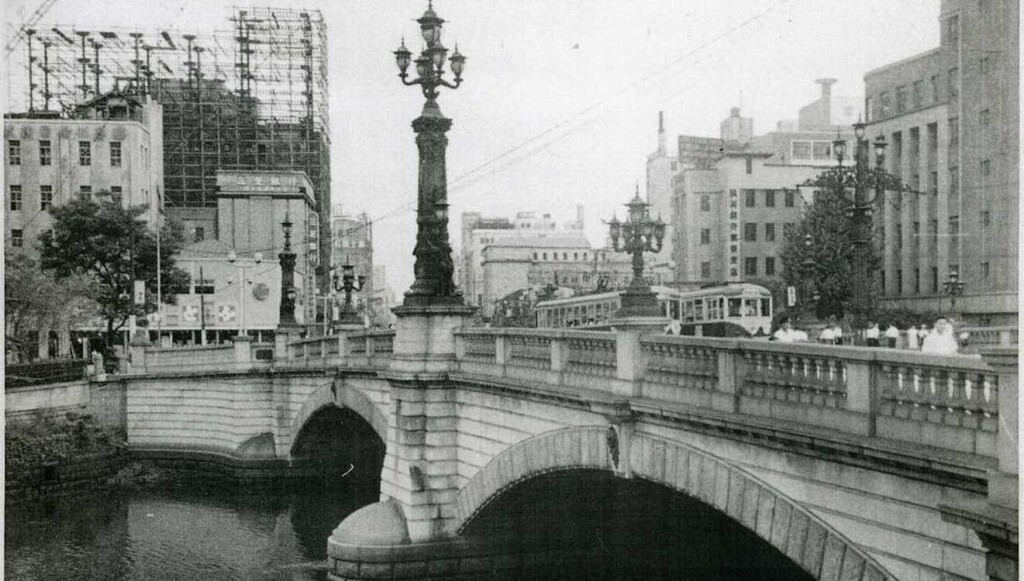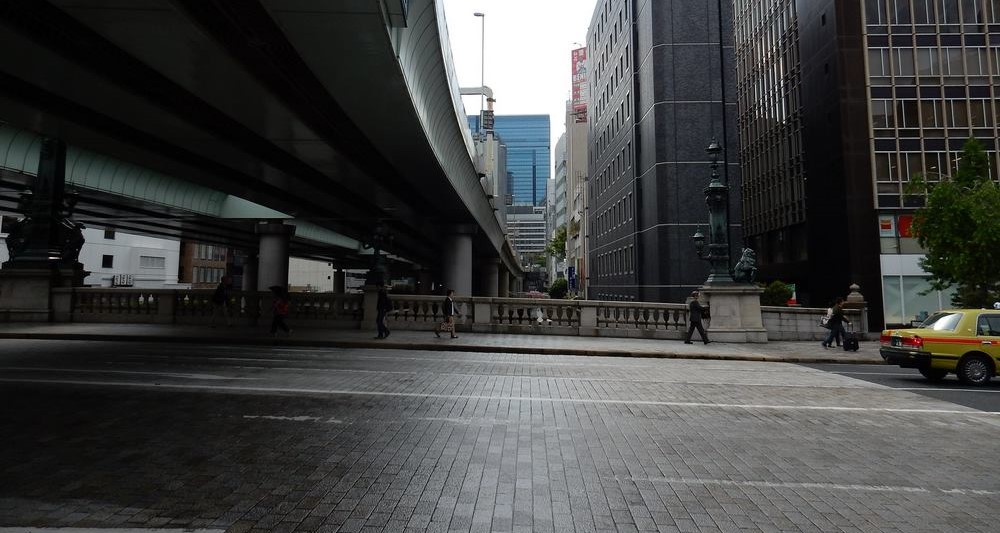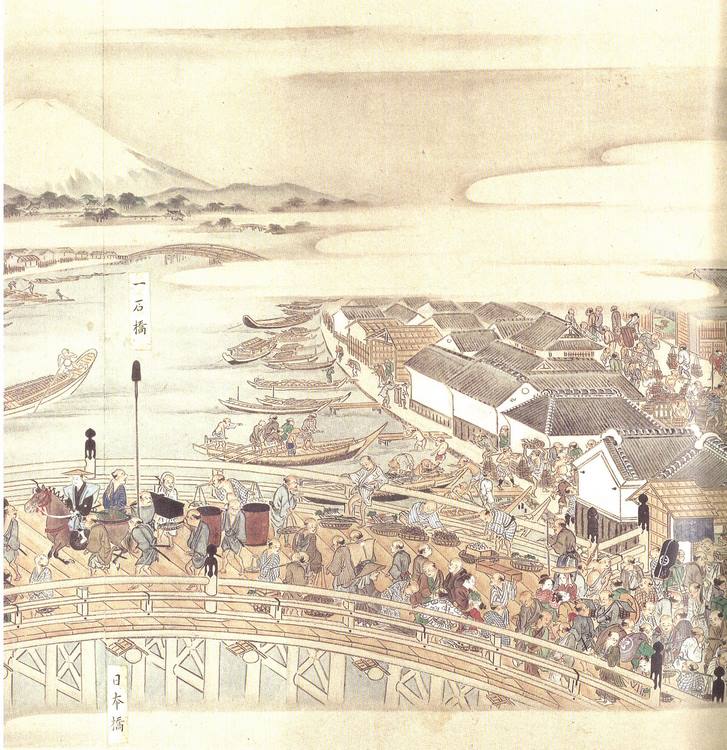 Nihonbashi Bridge before WWII – credit Urbz CC 2.0. via Flickr
Nihonbashi Bridge before WWII – credit Urbz CC 2.0. via FlickrImagine the outrage if construction of a highway interchange was approved directly overhead of the Brooklyn Bridge—that’s what one Tokyo neighborhood has had to deal with for more than 60 years.
The most historic bridge in the city has long been bathed in the shadow and tumult of a concrete overpass, but things are looking up for the Nihonbashi Bridge—literally.
 The bridge under the overpass – credit Charles, CC 2.0. via Flickr
The bridge under the overpass – credit Charles, CC 2.0. via FlickrA coalition of the metropolitan governments is preparing to remove the overpass as part of an urban rejuvenation project. The result will take the area back to the days of the Meiji Restoration, when the bridge was a center of community activity, and a symbol of both progress and order.
Construction of Nihonbashi was ordered in 1603 by the shogun Tokugawa Ieyasu, and it was to serve a huge purpose in the future organization of the state. It was considered the first reference node of the entire Japanese national road network at the time.
The network consisted of five postal routes which reached from Tokyo—then the prosperous merchant-artist-fishing town called Edo—to the Imperial capital at Kyoto, and four other major provincial capitals. Road signs to and from the locations grew or shrank in distance according to the sign’s distance from Nihonbashi Bridge.
It was the point from which all distances in the country were measured, and this collection of digitized postcards and other drawings shows how it and the neighborhood named after it changed over the years.
 A depiction of the Nihonbashi Bridge during the Edo period – credit, Urbz, CC 2.0. via Flickr
A depiction of the Nihonbashi Bridge during the Edo period – credit, Urbz, CC 2.0. via FlickrRebuilt in a European style in 1911, it survived all the ravages of World War II, only to be crowded over by the elevated expressway during the hasty modernization of the city in the lead up to the ’64 Summer Olympics.
“Historically, Nihonbashi used to be a place where people could look up and see Mount Fuji,” Taneo Nakamura, chairman a local preservation group pushing to remove the overpass, told Japan Times. “Now, you look up and just see concrete.”
Nakamura was an executive of a department store chain that had a location near the bridge, and he was there day in and day out while it was being built.
“At the time, the river was dirty and the area run-down, so there was excitement about modernization,” he said. “But when it was completed, the structure was lower and darker than anyone had expected. The entire atmosphere of the bridge was lost.”
ALSO CHECK OUT: Think Kids Are Addicted to Phones? US ‘Stationery Nerds’ Are Fueling a Japanese Notebook Boom
On the current bridge’s centennial year, the Tohoku earthquake struck the city, and the government began reassessing infrastructure on a nationwide scale. Nakamura and other community leaders seized the opportunity to collect signatures on a petition calling for the overpass to be removed, and to bring “light to the river” again.
Half a million John Hancocks later, the Tokyo Metropolitan Government, Chuo Ward municipal government, national government, and Metropolitan Expressway, formally submitted a plan for a $2.2 billion rejuvenation project that would see the overpass move underground, and the bridge returned to its place at the center of the community.
URBAN REJUVENATION: Sweltering Athens Finally Plants Thousands of Trees and Renovates Iconic Acropolis Hills with Greenery
A hugely sensitive project that will involve tunneling under the river and between subway lines all while redirecting a major traffic artery, it will be coupled with the building of a riverside pedestrian walkway about 0.8 miles long lined with recreation areas. Tunneling is slated for completion by the next decade, and the whole area should be finished by 2040.
SHARE This Fascinating Local Tokyo History With Your Friends Who Love Japan…
Source link

